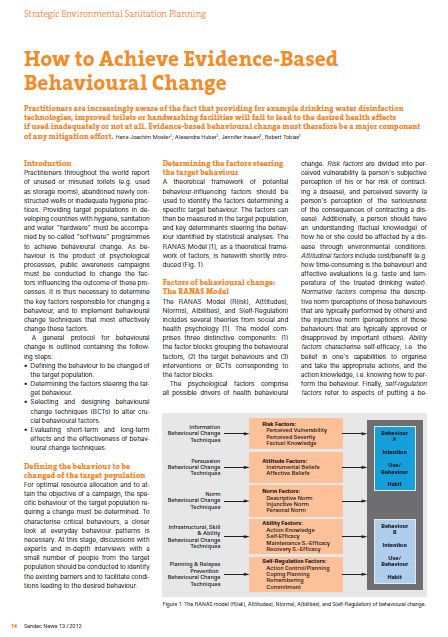How to achieve evidence-based behavioural change
Mosler, H., Huber, A., Inauen, J., Tobias, R. (2012)

Published in: 2012
Publisher:
Article in Sandec News 13/2012, EAWAG, Switzerland
Author:
Mosler, H., Huber, A., Inauen, J., Tobias, R.
Uploaded by:
SuSanA secretariat
Partner profile:
common upload
4895 Views
101 Downloads
Content - Summary
Practitioners throughout the world report of unused or misused toilets (e.g. used as storage rooms), abandoned newly constructed wells or inadequate hygiene practices. Providing target populations in developing countries with hygiene, sanitation and water “hardware” must be accompanied by so-called “software” programmes to achieve behavioural change. As behaviour is the product of psychological processes, public awareness campaigns must be conducted to change the factors influencing the outcome of these processes. It is thus necessary to determine the key factors responsible for changing a behaviour, and to implement behavioural change techniques that most effectively change these factors.
A general protocol for behavioural change is outlined containing the following steps:
• Defining the behaviour to be changed of the target population.
• Determining the factors steering the target behaviour.
• Selecting and designing behavioural change techniques (BCTs) to alter crucial behavioural factors.
• Evaluating short-term and long-term effects and the effectiveness of behavioural change techniques.
Bibliographic information
Mosler, H., Huber, A., Inauen, J., Tobias, R. (2012). How to achieve evidence-based behavioural change. Article in Sandec News 13/2012, EAWAG, Switzerland
Filter tags
Behaviour change (WG13) English Practitioners Recommended by SuSanA (other than SuSanA publications)















